Alumni Bookshelf
Dino A. Brugioni, BA ’47,
MA ’48, published “The
Effects of Aerial Satellite Imagery on the 1973 Yom Kippur
War” in the fall 2004 issue of Air Power History.
It was the first article on how the SR-71, U-2 and satellite
imagery was used during that national and international crisis.
“For us it was additionally difficult since [former Vice
President Spiro] Agnew had resigned and impeachment proceedings
were started on President Nixon during this period. I was
surprised the agency approved it since much of the imagery
is still classified,” Brugioni says. The author is a
resident of Hartwood, Va.
The author of 10 books, Mary Wakefield
Buxton, MA ’86, published Love Stories, People
and Places of Middlesex County (Rappahannock Press, 2004),
a collection of stories gathered from Buxton’s weekly
columns spanning more than 20 years writing for the Southside
Sentinel in Urbanna, Va. Local residents, sights, and
traditions are celebrated in the work, which also is filled
with photo-graphs of area landmarks.
Beloved for his thoughtful prayers and inspiring
poetry, Richard B. Carleton was known as “the Poet Preacher.”
His son, Jon R. Carleton, EdD ’99, collected many
of his papers and sermons and wrote The Tie that Binds:
The Poems of the Poet Preacher (iUniverse, 2004) and This
is the Way I Pray: The Prayers and Meditations of the Poet
Preacher (iUniverse, 2004). The latter was selected as an
“editor’s choice” by the publisher.
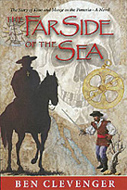 Ben
Clevenger, who completed his residency in pathology at
GW Hospital in 1971, published The Far Side of the Sea
(Jesuit Fathers of Southern Arizona, 2004), a novel on the
life of Padre Eusebio Kino, a missionary from Europe who lived
among the Pima and Papago Indians of northern Sonora and southern
Arizona in the late 17th century. Kino was named by the Arizona
Republic as one of the 10 most influential people in the
state’s history. In addition to recounting Kino’s
life and works, the novel describes the work of the archaeologists
who discovered his burial site in Sonora in 1966. Clevenger
is retired from his service as a medical officer in the U.S.
Air Force and lives with his wife near Phoenix. Ben
Clevenger, who completed his residency in pathology at
GW Hospital in 1971, published The Far Side of the Sea
(Jesuit Fathers of Southern Arizona, 2004), a novel on the
life of Padre Eusebio Kino, a missionary from Europe who lived
among the Pima and Papago Indians of northern Sonora and southern
Arizona in the late 17th century. Kino was named by the Arizona
Republic as one of the 10 most influential people in the
state’s history. In addition to recounting Kino’s
life and works, the novel describes the work of the archaeologists
who discovered his burial site in Sonora in 1966. Clevenger
is retired from his service as a medical officer in the U.S.
Air Force and lives with his wife near Phoenix.
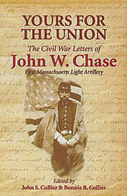 A
collection of 172 letters written by John W. Chase during
his service with the Army of the Potomac during the Civil
War, Yours for the Union (Fordham University Press,
2004), co-edited by Bonnie B. Collier, MFA ’71,
is part of The North’s Civil War series published by
Fordham University. The letters detail how Chase, a widower
with four children, struggled to provide for his family, maintain
his finances, and obtain food and clothing to supplement his
sparse rations during the tumultuous days of the war. She
resides in Boyds, Md. A
collection of 172 letters written by John W. Chase during
his service with the Army of the Potomac during the Civil
War, Yours for the Union (Fordham University Press,
2004), co-edited by Bonnie B. Collier, MFA ’71,
is part of The North’s Civil War series published by
Fordham University. The letters detail how Chase, a widower
with four children, struggled to provide for his family, maintain
his finances, and obtain food and clothing to supplement his
sparse rations during the tumultuous days of the war. She
resides in Boyds, Md.
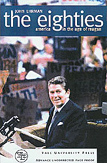 The
Eighties: America in the Age of Reagan (Yale University
Press, 2004) by John Ehrman, PhD ’93, recounts
how the country changed in myriad ways—from technological
advancements to revisions of the tax code—during the
fast-paced decade. Ehrman tracks the transformation in the
context of the late president’s policies and convictions
and examines the broader trends that enabled Reagan to achieve
so much of his agenda. The author is a foreign affairs analyst
for the federal government and previ-ously was a history lecturer
at GW. The
Eighties: America in the Age of Reagan (Yale University
Press, 2004) by John Ehrman, PhD ’93, recounts
how the country changed in myriad ways—from technological
advancements to revisions of the tax code—during the
fast-paced decade. Ehrman tracks the transformation in the
context of the late president’s policies and convictions
and examines the broader trends that enabled Reagan to achieve
so much of his agenda. The author is a foreign affairs analyst
for the federal government and previ-ously was a history lecturer
at GW.
Brian Forst, PhD ’93, is the
author of Errors in Justice: Nature, Sources and Remedies
(Cambridge University Press, 2004), part of the Cambridge
Studies in Criminology Series. The work applies approaches
for managing errors in domains such as production quality
control and statistical inference to the reduction of wrongful
conviction and wrongful nonconvictions attributable to the
police, prosecutors, and courts.
Writing under her pen name, Rebecca York,
Ruth Glick, BA ’64, published her 100th book,
Crimson Moon (Berkley Sensation, 2005), the fourth
book in her popular werewolf series. The novel’s hero,
Sam Morgan, delights in robbing rich men whose companies wreck
the environment. He meets his match in a woman who hires him
to pull off a spectacular robbery—she turns out to be
the daughter of his sworn enemy. Glick, who often uses her
native Washington as the setting of her books, set Crimson
Moon in her husband’s home state of California. Glick
and her husband reside in Columbia, Md.
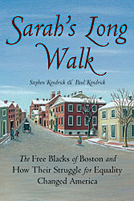 In
Sarah’s Long Walk (Beacon Press, 2004), Paul
Kendrick, BA ’05, and his father, Stephen Kendrick,
tell the story of Sarah Roberts, whose father sued the city
of Boston in 1849 to gain her access to white schools, setting
in motion a direct legal line that culminated in Brown
v. Board of Education. Rather than force her to walk past
five other schools to Abiel School on Beacon Hill, at that
time underfunded and overcrowded, Benjamin Roberts hired Robert
Morris, the first African American attorney to win a jury
case in the United States, and Charles Sumner to present the
case. In 1850, Chief Judge Lemuel Shaw ruled against them,
writing a decision that set the basis for the “separate
but equal” standard in Plessy v. Ferguson. In 1855, a
liberal reformer used the arguments from the Roberts case
to lead to the desegregation of Massachusetts public schools.
Paul Kendrick previously was an intern for Sen. Edward Kennedy
(D-Mass.), and is the Washington chapter president of the
NAACP. In
Sarah’s Long Walk (Beacon Press, 2004), Paul
Kendrick, BA ’05, and his father, Stephen Kendrick,
tell the story of Sarah Roberts, whose father sued the city
of Boston in 1849 to gain her access to white schools, setting
in motion a direct legal line that culminated in Brown
v. Board of Education. Rather than force her to walk past
five other schools to Abiel School on Beacon Hill, at that
time underfunded and overcrowded, Benjamin Roberts hired Robert
Morris, the first African American attorney to win a jury
case in the United States, and Charles Sumner to present the
case. In 1850, Chief Judge Lemuel Shaw ruled against them,
writing a decision that set the basis for the “separate
but equal” standard in Plessy v. Ferguson. In 1855, a
liberal reformer used the arguments from the Roberts case
to lead to the desegregation of Massachusetts public schools.
Paul Kendrick previously was an intern for Sen. Edward Kennedy
(D-Mass.), and is the Washington chapter president of the
NAACP.
Julie Guyton Landsman, BA ’66,
is the author of A White Teacher Talks About Race,
(Scarecrow Press, 2001), which was chosen by Barnes &
Noble as part of its Closing the Book on Hate series. She
currently tours nationally and internationally, discussing
the work and speaking on issues of racism, social activism,
and teaching. “After 28 years in the classroom, most
in city schools, this has been a marvelous gift,” Landsman
reports. She resides in Minneapolis.
An educational psychologist who coaches
adults and adolescents to enhance their performance at work,
home, or school, Geraldine Markel, EdS ’68, is
the co-author of Peterson’s Parent’s Guide to
the SAT and ACT (Peterson’s 2004). Other books she
has co-written include Performance Breakthroughs for Adolescents
with Learning Disabilities and ADD and Helping Adolescents
with ADHD and Learning Disabilities. Markel resides in
Ann Arbor, Mich.
As a parent of a severely food-allergic
child, Nicole (Shields) Smith, BBA ’83, says she
knows “the struggles to keep your child safe and yet
also keep them a part of a group of friends.” She is
the author of Cody the Allergic Cow: A Children’s
Story of Milk Allergies (Jungle Communications, 2004).
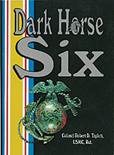 Col.
Robert D. Taplett, MA ’74, is retired from the U.S.
Marine Corps and published Dark Horse Six (Phillips
Publications, 2003), a memoir of his experiences in the Korean
War from August 1950 to February 1951. As the commanding officer
of the 3rd battalion, 5th Marines, Taplett says, “my
heart told me to record their outstanding story of daily combat
and self-sacrifice and lasting camaraderie.” Col.
Robert D. Taplett, MA ’74, is retired from the U.S.
Marine Corps and published Dark Horse Six (Phillips
Publications, 2003), a memoir of his experiences in the Korean
War from August 1950 to February 1951. As the commanding officer
of the 3rd battalion, 5th Marines, Taplett says, “my
heart told me to record their outstanding story of daily combat
and self-sacrifice and lasting camaraderie.”
War Games: Inside the World of 20th-Century
War Reenactors (Smithsonian Institution Press, 2004) by
Jenny Thompson, MA ’93, takes readers into the
heart of an American subculture whose thousands of members
dress the part and debate the meanings of more recent American
wars. While Civil War reenactments are well known to the public,
Thompson says reenactments of more recent wars, including
World War II and Vietnam, are far less familiar to the public.
The book is based on interviews with participants, survey
data, and seven years of fieldwork—Thompson herself donned
uniforms and joined with several units to find out what reenactment
was all about.
Daniel Weiss, BA ’79, the James
B. Knapp Dean of the School of Arts and Sciences at Johns
Hopkins University, published his fourth book, France and
the Holy Land: Frankish Culture at the End of the Crusades
(Johns Hopkins University Press, 2004), with co-author Lisa
Mahoney. Weiss is a resident of Baltimore.
Back to top | Spring/Summer
2005 Table of Contents
|